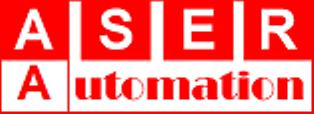Building Energy Automation Solution
Over the last decade, we’ve become more aware of how much we are actually spending on the electricity charges. The biggest payers are residential, commercial and office buildings. They consume vast amount of energy – something that shouldn’t be too surprising considering the fact that we spend about 90 percent of our time indoors.
To fight this, many building owners and operators are implementing building energy automation systems. Energy automation systems will not only help reduce the negative effect your commercial building is having on the environment, but they will also reduce your overhead costs as well by cutting your building’s power consumption.


Cost Effective
-
When you consider that the ASER Energy Automation Solution can provide energy savings of 20 – 25% and in some cases can save up to 40% depending on the building type and usage, the cost of investment is quickly paid back.
Payback periods can be up to 2 years
Benefits of ASER Building Energy Automation Solution:
-
Payback periods of less than 2 years
-
Reduced energy costs of up to 25%
-
Lower maintenance costs
-
Extended equipment lifetime through efficient operation
-
Multi-building energy performance bench-marking
-
Real-time energy performance analysis and display
-
Energy alerts in real time
-
Increased public and staff awareness
-
Maintained occupancy comfort levels
-
Reduced carbon emissions
What are Building Energy Automation Systems?
A building energy automation system is a system that monitors and controls the electricity needs of your building. This allows you to use as little power as possible while maintaining comfort and production levels. There are three main ways to manage power within a building:
Power conservation
Power conservation refers to reducing your building’s electricity use by eliminating waste, through economy or through more rational use.
Power recovery
Power recovery refers to the reuse of one system’s power byproduct for the input power of another system.
Power substitution
Power substitution is the method of replacing a source of energy or fuel with one that is more economical or less polluting.
When it comes to collecting power-related data, a building energy automation system will do much more than a typical power audit. An energy automation system will collect your building’s data from legacy as well as new sources. Then it centralizes and analyzes that data, so you can make informed decisions about both immediate power saving possibilities as well as future, large-scale energy saving products that you can invest in.
A complete energy automation system provides:
-
The ability to gather data from every available power source, whether it’s old, new, integrated or stand-alone.
-
The ability to identify problems and trends by analyzing both single-variable and multi-variable data.
-
The ability to provide alerts if your building’s energy consumption exceeds the parameters you established.
-
The ability to integrate with control systems to automate responses and input data.
-
The ability to provide early warnings for any mechanical or electrical failures.
-
The ability to identify energy waste and to recommend fixes, allowing for easier payback.
-
The ability to benchmark your building’s power use against other buildings in similar climates.
Different Functions of Building Energy Automation Systems
There are many different types of Building Energy Automation systems available. But not every energy automation system is suitable for your building. Different systems have different functions, and the types of functions you’ll want in your energy management system depend on your building’s specific needs.
A few of the functions that a building energy automation system might include are:
Advanced building analytics
A feature that scans the energy performance of your building using in-depth data and real time data, and that can identify and rectify performance issues automatically.
Advanced metering infrastructure analysis
This allows data to be collected from a utility at specific time intervals. This provides a more accurate understanding of your building’s energy consumption.
Automated demand response
This helps to automatically reduce power use during peak load events by automating the control of your building’s components or systems.
Automated building control
This allows your energy automation system to interact with your building’s devices and systems in a dynamic manner.
Basic power information portal
This refers to either a website or standalone portal that displays your building’s basic power consumption information. It can also provide tips and suggestions for power savings.
Retrofit programs
This refers to replacing building equipment to make your building more energy efficient. For example, replacing light bulbs with more energy efficient versions or upgrading HVAC equipment.
Power consumption benchmarking
This compares your building’s historical power consumption with current power consumption to help you understand your building’s on-going performance.
Building optimization
This feature allows your energy management system to interact with your building’s systems to optimize their performance on a real time basis.
Ongoing performance analysis
This ensures your system is working optimally.
Demand response
This allows your system to respond to changing factors, such as high energy costs or system resource capacity needs.
Energy dashboard
A display that allows you to easily access and understand energy consumption data.
Measurement and verification
This makes sure that your energy efficiency measures or system improvements are producing the results that you expect. It’s particularly important to identify your system’s Return on Investment.
Notifications and alerts
A feature that notifies you of any issues, from maintenance needs to problematic equipment.
Factors to take into consideration
Every building has different needs, which means that some building energy automation systems have functions you don’t need, or lack functions that you do need. To determine what your needs actually are, you shall consider:
The size of your building
A sophisticated building energy automation system that boasts a wide variety of functions may not be necessary for a smaller building. Depending on your building’s size, there are specific features you should look for.
Small-sized buildings
If you have a smaller building, you should look for a system that uses a basic energy information portal, provides information on incentive availability, provides historical billing analysis and provides behavioral, educational and basic suggestions.
Medium-sized buildings
You’ll want to consider a system that provides power monitoring, retro and continuous commissioning, NOC availability, maintenance, advanced metering infrastructure data analysis and program suggestions.
Large-sized buildings
Bigger buildings will most likely require advanced building and predictive analytics, building optimization and continuous optimization, demand response, automated building control, automated demand response and enterprise integration.
Stop energy drains in your building.
Ease of Connecting to the ASER Building Energy Automation Solution
-
The ASER Energy solution can be adapted to suit any type of building regardless of the Building Energy Management System or metering solution installed.
-
The solution can be configured and adapted to suit the customers needs.
-
There are no limits to the number of information points or geographical locations that can be connected to the system making it an ideal central energy monitoring, automation and management tool for multisite and multi-building organizations.
Usability
The ASER Energy Solution operates on a user friendly interface that enables the user to monitor energy consumption and generate usage charts, analysis, alarms, and reports.
These features allow the end user to monitor the energy performance of their building in real time and receive alerts during periods of energy consumption anomalies which may indicate a system override, a leak or a change in the building occupancy patterns that needs to be taken into consideration.

Corporate Headquarters
-
ASER SA
B.P. 52
Rte de Sommentier 92 1687 Vuisternens
Switzerland
Phone: +41 32 835 36 28
Email:info@aserautomation.com






 English
English